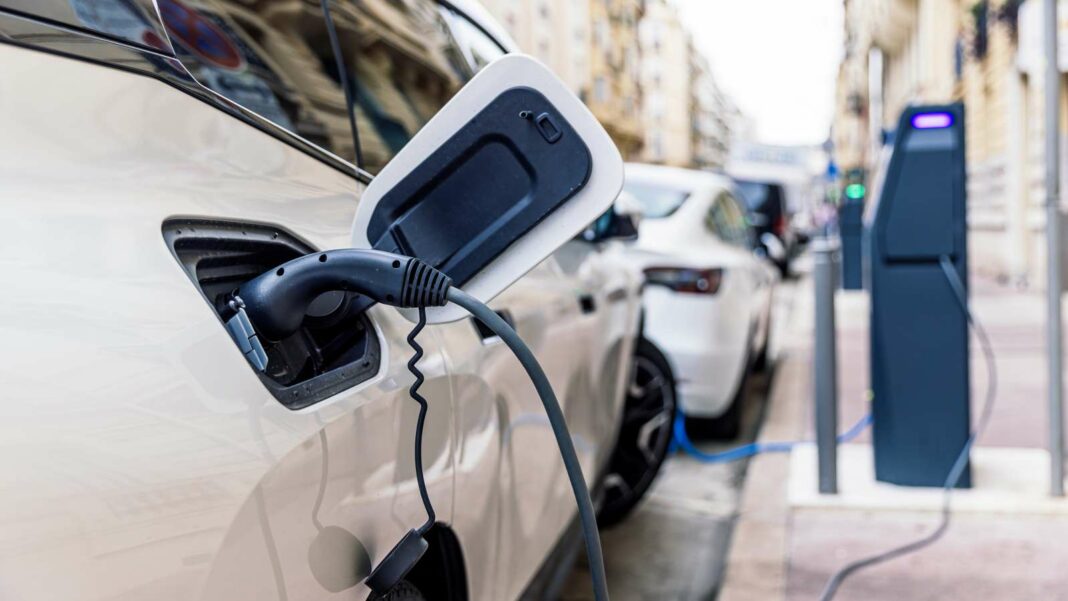Significant progress has been made in air quality and electric vehicle adoption in Germany, with a 45% increase in registrations from 2021 to 2023. Hessen leads in electric vehicle registrations, while North Rhine-Westphalia has the most environmental zones. Saxony boasts the best air quality despite having fewer electric vehicles. The correlation between environmental zones and air quality improvement is evident, suggesting continued efforts are needed in regions with poorer air quality to achieve better results.
Progress in Air Quality and Electric Vehicle Adoption in Germany
The Clean Air Fund reports a continuous enhancement in air quality across the European Union over the past twenty years, yet there remains ample opportunity for further improvement. Germany has undertaken significant measures to bolster air quality, such as the implementation of 62 environmental zones and a remarkable 45% rise in electric vehicle registrations from 2021 to 2023.
In-depth research conducted by experts at FINN has analyzed data to pinpoint the federal states with the highest number of electric vehicles in 2023. The analysis also reviewed the states that boast the most environmental zones and assessed their respective air quality indices. These findings illuminate which federal state has made the most substantial contributions to air quality through the integration of electric vehicles and environmental zones.
Electric Vehicle Registration Leaders in Germany
Leading the charge in electric vehicle registrations in 2023 is Hessen, with an impressive 932 new electric vehicle registrations per 100,000 residents. As the fifth most populous federal state, Hessen encompasses the Frankfurt-Rhine-Main region, Germany’s second-largest metropolitan area.
Bavaria follows closely in second place, showcasing 777 new electric vehicle registrations per 100,000 citizens in 2023. Being the largest federal state by area, Bavaria is demonstrating its dedication to fostering electric mobility.
Ranking third is Baden-Württemberg, with 736 new electric car registrations per 100,000 inhabitants in 2023. Known as a central hub for sustainable mobility initiatives in Germany, Baden-Württemberg aims to power half of its vehicles with renewable energy sources by 2030.
On the other end of the spectrum, Mecklenburg-Western Pomerania recorded the fewest electric vehicle registrations, with just 238 per 100,000 residents. This low figure can be attributed to its status as the least populated federal state, which has a vast area and a relatively small population.
Saxony-Anhalt ranks just above it, with 254 new electric vehicle registrations per 100,000 inhabitants in 2023. This region also has a low population density, with only 107 people per square kilometer.
Finally, Saxony comes in third from the bottom, with 286 new electric vehicle registrations per 100,000 residents. Notably, Saxony is a manufacturing hub for electric vehicles, housing the Volkswagen plant in Zwickau and the Transparent Factory in Dresden, which has shifted its focus exclusively to electric vehicle production.
Environmental Zones and Air Quality Indices
North Rhine-Westphalia leads the nation in the number of environmental zones, boasting a total of 30 distributed across its cities and municipalities. As the most densely populated federal state, North Rhine-Westphalia plays a significant role in air quality management.
Baden-Württemberg ranks second with 13 environmental zones, although it had to abolish four zones in January 2024 due to improved air quality. Hessen, with six environmental zones, also contributes to the fight against air pollution through various initiatives, including the establishment of the Hessian State Office for Nature Conservation.
Examining air quality across German federal states through PM2.5 values reveals that Saxony enjoys the best air quality, with an average index of 39, indicating ‘good’ air quality (0-50). Interestingly, Saxony has only one environmental zone and ranks tenth in electric vehicle registrations, suggesting that its clean air may not require stringent measures.
Schleswig-Holstein follows closely with an average air quality index of 41, also categorized as ‘good’. With its seventh position in electric vehicle registrations, it likely benefits from this growing adoption.
Bavaria takes third place with an average air quality index of 44, supported by its fourth most environmental zones and the second-highest number of electric vehicle registrations in 2023.
Conversely, Lower Saxony tops the list for the poorest air quality, with a projected average index of 60 in 2024, placing it in the ‘moderate’ category. While it has implemented three environmental zones, increasing their number could enhance air quality further.
Sharing the second spot for poor air quality are Saarland, Hamburg, and North Rhine-Westphalia, each with an index of 58. Saarland, lacking any environmental zones, finds itself in the middle range for electric vehicle registrations, while North Rhine-Westphalia’s high population density contributes to its elevated index.
Rhineland-Palatinate ranks fifth with an average air quality index of 57, and without new environmental zones planned for 2024, air quality is likely to remain moderate.
The introduction of electric vehicles and the establishment of environmental zones have already begun to positively impact air quality in various German federal states. Bavaria, showcasing the third-highest air quality index, recorded significant electric vehicle registrations in 2023, alongside its four environmental zones.
In populous regions like North Rhine-Westphalia, Baden-Württemberg, and Lower Saxony, the effects of these initiatives are not yet fully realized, but they are expected to yield improvements in air quality over time. Saarland stands to gain from implementing environmental zones, as it currently lacks any and ranks poorly in air quality. Similarly, Hamburg, a city-state without environmental zones, ranks high in electric vehicle registrations but may require more robust measures for notable improvements.
